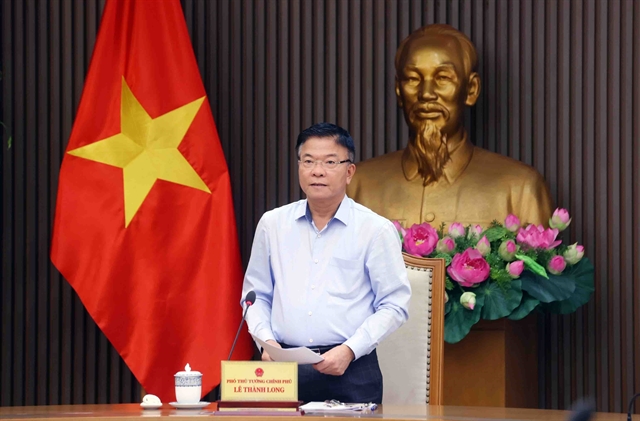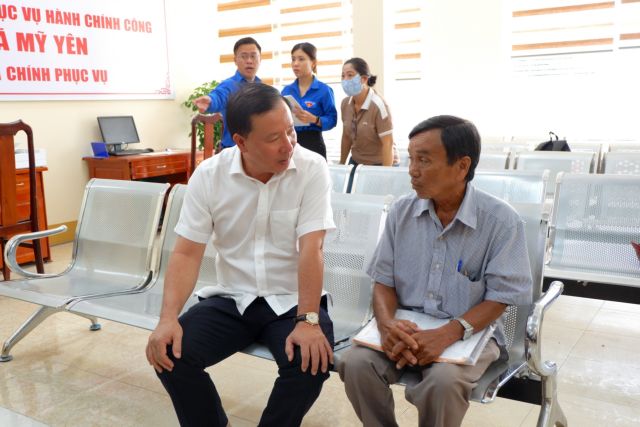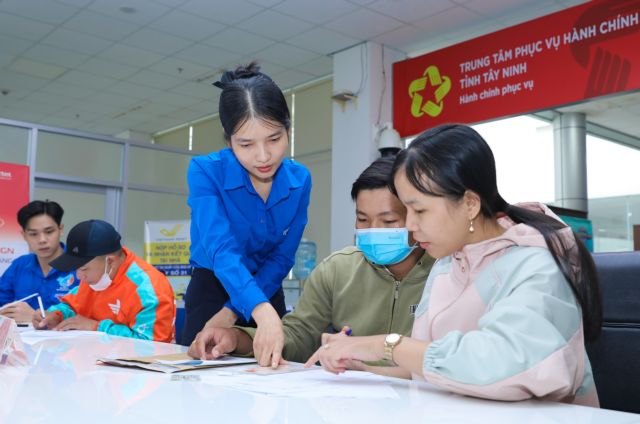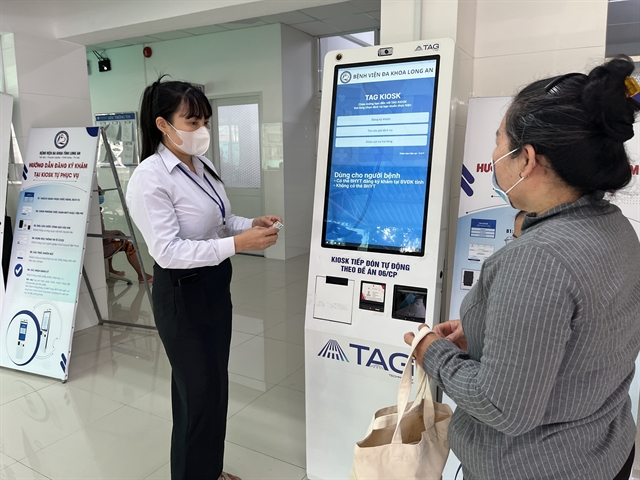 Society
Society


|
| Administrative procedures being completed at the “one-stop shop” and “interconnected one-stop shop” at the Tân Đông Commune Public Administration Service Centre in Tây Ninh Province. — VNA/VNS Photo Giang Phương |
TÂY NINH — Tây Ninh Province is accelerating its comprehensive digital transformation, focusing on building a digital government as the foundation for sustainable socio-economic development after the recent mergers of provinces and cities across the country.
Following the merger of the former provinces of Tây Ninh and Long An into the new Tây Ninh Province on July 1, the newly formed province now spans 8,536sq.km and has a population of more than 3.25 million people.
In the first half of the year, its economy grew by 9.63 per cent, with the former Long An achieving 9.49 per cent and the former Tây Ninh 9.84 per cent.
This meant Tây Ninh ranked first in growth among southern provinces and cities and seventh out of the 34 provinces and cities nationwide, according to the National Statistics Office.
Nguyễn Mạnh Hùng, standing deputy secretary of the province Party Committee and chairman of the People’s Council, said the province had achieved remarkable results, particularly the economic growth rate of 9.63 per cent, thanks to strong determination and great effort.
“This growth rate provides momentum for continued growth in the second half of the year and lays the groundwork for double-digit growth in 2026–30.”
The People’s Committee has issued an action plan for the second half of the year, targeting economic growth of 9–9.5 per cent for 2025 and striving to surpass 10 per cent.
The province is working to realise this double-digit growth target through digital transformation, with digital government and infrastructure as the core foundations.
The province has increased investments in its digital infrastructure, according to its Department of Science and Technology.
5G coverage has reached 6.4 per cent, and 92 per cent of households have fibre-optic internet with an average speed of 100 Mbps.

|
| Chairman of the Tây Ninh Province People’s Committee, Nguyễn Văn Út (left), speaks with a member of the public about their satisfaction with the implementation of the two-tier government model at the Mỹ Yên Commune Public Administration Service Centre on July 23. – VNA/VNS Photo Đức Hạnh |
Before the merger, the former Tây Ninh and Long An provinces actively promoted the application of scientific and technological advances, especially digital technology, across all socio-economic sectors, with a focus on developing digital government and smart urban services.
In terms of digital government, Tây Ninh has fully implemented an official document management system across all departments.
Digitally signed documents now account for 99.95 per cent at the commune level.
The province has integrated administrative procedures with the National Public Service Portal and strengthened communication through platforms such as YouTube, Zalo and the Tây Ninh Smart app.
Nearly 1.5 million level-2 digital IDs have been issued.
The province continues to streamline its administrative system to be “lean, strong, efficient, effective, and high-performing,” ensuring the smooth operation of the two-tier government model following the merger.

|
| Young volunteers assist local people with administrative procedures at the Tây Ninh Provincial Public Administration Service Centre in Long An Ward. – VNA/VNS Photo Thành Phương |
Breakthroughs
Tây Ninh is putting into action its strategic objectives aligned with the Politburo’s Resolution No. 57-NQ/TW, dated December 22, 2024, on breakthroughs in science, technology, innovation, and national digital transformation.
It has established a steering committee for the development of science, technology, innovation, and digital transformation, and launched various detailed programmes and plans, assigning clear responsibilities to each agency and locality.
These programmes aim to raise public awareness, develop digital infrastructure, train high-quality human resources, and promote innovation among businesses.
The province has also rolled out the 2025 investment promotion programme, prioritising the attraction of investment in digital technology and the digital economy.
It is actively encouraging e-commerce, including hosting cashless market events and promoting products recognised under the “One Commune–One Product” programme on TikTok Shop.

|
| An employee at the Long An General Hospital in Tây Ninh Province’s Long An Ward helps a visitor use an automated self-service kiosk to register for medical examination. Tây Ninh Province is promoting digital transformation in healthcare. – VNA/VNS Photo Đức Hạnh |
By 2030, the province aims to rank among the better-performing localities in digital governance.
It targets having 40 per cent of businesses engaging in innovation, 80 per cent of transactions being cashless and a 20–30 per cent contribution to the economy by the digital economy.
To ensure sufficient resources for its digital transformation, the province plans to allocate at least 3 per cent of its annual budget to science, technology, innovation, and digital transformation, with gradual increases based on actual needs.
Public scientific and technological organisations will be restructured to operate more efficiently, ensuring a close linkage between research, application and innovation.
The province also plans to expand 5G coverage across its entire territory, apply AI, IoT and Big Data, and foster a start-up ecosystem aligned with key sectors identified in the Politburo’s Resolution No. 57-NQ/TW.
Nguyễn Văn Út, Chairman of the People’s Committee, said: “Tây Ninh aims to be in the top 15 nationwide in the Satisfaction Index of Public Administration Services by 2025.”
It would address shortcomings, improve policy implementation and strengthen service delivery to the public, especially at one-stop service centres, he promised.
It would also step up civil service reform by simplifying administrative procedures, advancing e-governance, deploying information technology, and expanding online public services, he added. — VNS




